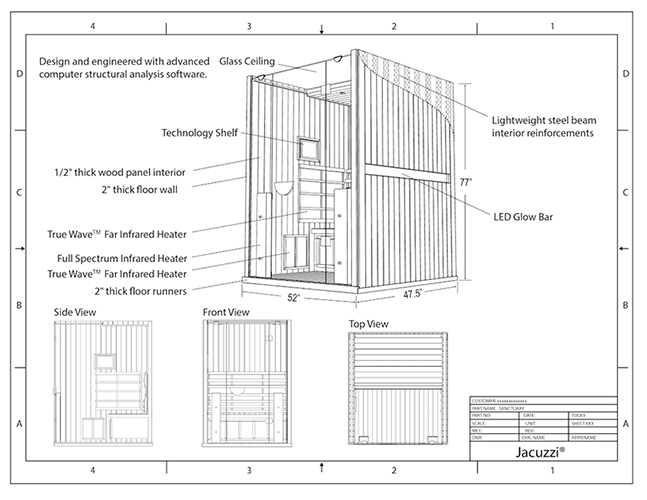While common belief is that yoga has been around for almost 5,000 years, today’s popular yoga styles – Vinyasa, Ashtanga, Bikram and Hatha, have come into prominence over the last 1,500 years. Little has changed in terms of the individual poses and their intrinsic benefits, but the popularity of yoga as a healthy art form has done nothing but explode in prominence over the past thirty years. Yoga is good for your mind, your body, and your spirit. Let’s look at some of the ways yoga can help you feel your best from the inside out.

What Are the Physical Health Benefits of Yoga?
Flexibility
Yoga poses gently force you to stretch, twist and bend your frame – and then hold each pose for a specific time. Do it right and you’ll quickly see better flexibility. This can translate into fewer injuries, pulled muscles and overall discomfort throughout your daily routine.
Muscle Tone
Yoga is a toning exercise – one that creates long, lean muscle tone that can more effectively support the musculoskeletal system. Yoga can make you strong, too. Think of the advanced yogis who perform headstands or handstands; that takes incredible strength and balance.
Weight Loss
Yoga, especially hot yoga, can burn serious calories and can be a cornerstone cardio activity for anyone looking to trim a few pounds. Though various yoga poses create a wide range of calorie burning situations, experts indicate that yoga burns between 180 and 600 calories per hour or an average of about 400/hour. Compare that to the 363 calories a 160-pound individual burns throughout the course of a one-hour, three-mile run, and you can see how great yoga can be for weight loss.

Enhanced Fertility
Yoga is a proven stress reliever, and in recent years the practice has been used by fertility experts as another infertility-fighting tool in their arsenal. Since stress has been linked to fertility problems, yoga can help in numerous ways. According to Bethany Grace Shaw, the founder and president of YogaFit, Inc. “Yoga allows the mother-to-be to relax, de-stress, and open up energetic channels, thereby improving chances of conception.” Yoga may also allow for better blood flow to reproductive organs, improving organ function and improving hormone function.
Reduced Risk for Heart Disease
Yoga helps individuals lose weight, improves circulation, boosts capacity for cardiovascular exercise, and keeps the heart at an elevated (but safe) rate during yoga sessions. Yoga helps foster a decrease in arterial plaque, and that minimizes the chance of heart disease becoming increasingly serious for the individual.
Reduced Risk for Arthritis
There are numerous medications designed to help ease the symptoms of rheumatoid arthritis, but they certainly aren’t without their side effects. Yoga can help rheumatoid arthritis patients better manage their pain, as well as lower depression levels and increase self-efficacy. Hot yoga is increasingly popular among arthritis sufferers, as the slow, controlled movements and heated environment can be quite beneficial for the joints.
What Are the Mental Health Benefits of Yoga?
Promotes Emotional Health
Exercise, in general, has shown to aid those afflicted by depression, and yoga is included under the wide umbrella of “exercise.” Yoga is often practiced in a group setting, which promotes oxytocin production – the love and bonding hormone. If practiced alone, it helps boost serotonin levels high enough to make virtually anyone feel happier and more positive about life in general.

Helps with Insomnia
Yoga can be quite helpful for those who find getting a good night’s sleep a challenge. Yoga helps improve circulation, calms the mind, and there are even poses that can be completed at night, before bed, or even during bouts of insomnia to help calm your head. There are a few specific poses that can help you sleep better.
Improves Memory
Research shows that yoga can help improve memory in individuals of any age. By lessening mental stress and tension, yoga helps improve cognitive functioning and allows us to use our mental faculties more effectively and efficiently.
Provides Support for PTSD
Individuals suffering from PTSD may find yoga to be a truly beneficial therapy tool in the fight against their debilitating condition. Studies have shown that yoga can help center and calm those with a PTSD diagnosis, and may be a solid option for PTSD sufferers who have found little relief from traditional psychotherapy methods.
Practicing yoga is a terrific way of improving your mental, physical and emotional health, and a lot of attention has been focused recently on the topic of hot yoga. Whether you’re a seasoned yogi or you’re just starting out and learning basic poses in a group setting, you may see an even greater spectrum of health and wellness benefits by incorporating hot yoga into your fitness routine. Either way, make yoga a part of your life, and you’ll almost certainly look and feel your best in no time.
 Canada
Canada Australia
Australia New Zealand
New Zealand Germany
Germany UK
UK EU
EU Ireland
Ireland Malaysia
Malaysia China
China Japan
Japan































